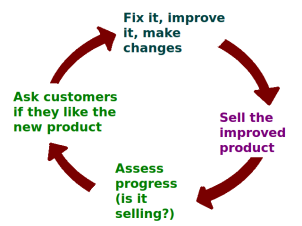Why does the “middle man” exist? Why do producers and wholesalers use intermediaries to sell their products? There are various reasons that are dependent upon many variables.
Direct Distribution
Direct distribution leads to lower prices for the consumer. Since the product is only marked up once, the selling price is much cheaper. As a result, consumers that purchase a product directly from the wholesaler or manufacturer will pay much less for a product.
Unfortunately, this is a very narrow view of the selling process. It would be very detrimental for the economy to use only direct distribution. First and foremost, wholesalers and manufactures are experts in creating the product. They do not have expertise in customer relations and individual consumer distribution. This is why the middle man exists. The benefits of a middle man will be discussed further in the blog.
While direct distribution is very appealing due to low prices, it can be far from efficient. There is a legitimate reason why many manufacturers and wholesalers do not distribute directly in order to gain competitive advantage. They are not adept in business to consumer type selling. Instead, they rather sell in bulk to another business. It will be that business who will have expertise in selling to consumers. These businesses will have proper logistics and consumer relations in order to support high individual demand whereas manufactures and wholesales do not have similar capacities.
Indirect Distribution
Indirect distribution has many advantages. That is why a large portion of the economy uses indirect distribution to sell products. Different firms specialize in different categories; it is very difficult to specialize in all the aspects of the product cycle. Thus, firms decide to focus on what they specialize in and use outside companies for the other tasks.
Manufacturers generally are experts in business to business relations. They know how to adjust prices due to bulk purchases and they know how to use raw materials to create products. This is where their expertise ends. Thus, they choose to sell their products at a profit to middle men. They are happy with the profit they are making. Furthermore, their whole operation remains efficient instead of only a portion.
The middle men understand consumer demand. They understand how to sell the product to the consumer. Moreover, they understand how to deal with consumer criticism and disapproval. The manufactures do not specialize in this area and prefer that the middle man handle individual consumer issues.
Conclusion
Indirect distribution can be extremely effective for all three parties: manufactures/wholesales, retailers, and customers. Manufacturers are able to focus on the product and only have to worry about bulk distribution. Retailers are able to focus on each individual consumer and large scale logistics. Consumers are able to receive expert products and expert assistance via manufacturers and retailers, respectfully. The indirect model may not offer the highest profit margin for manufacturers or the lowest costs for consumers, but it offers a very efficient model in order to have the highest value possible.




